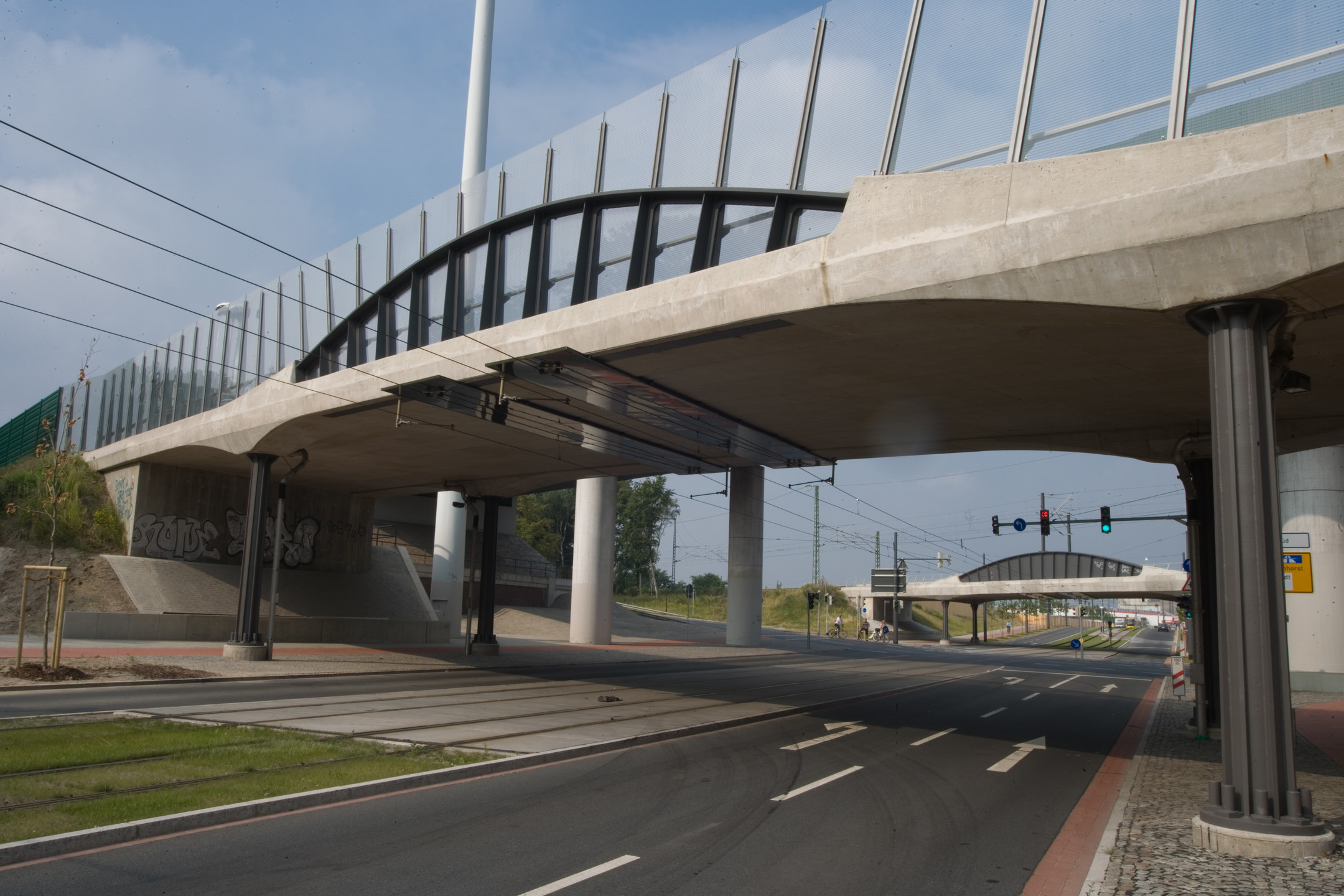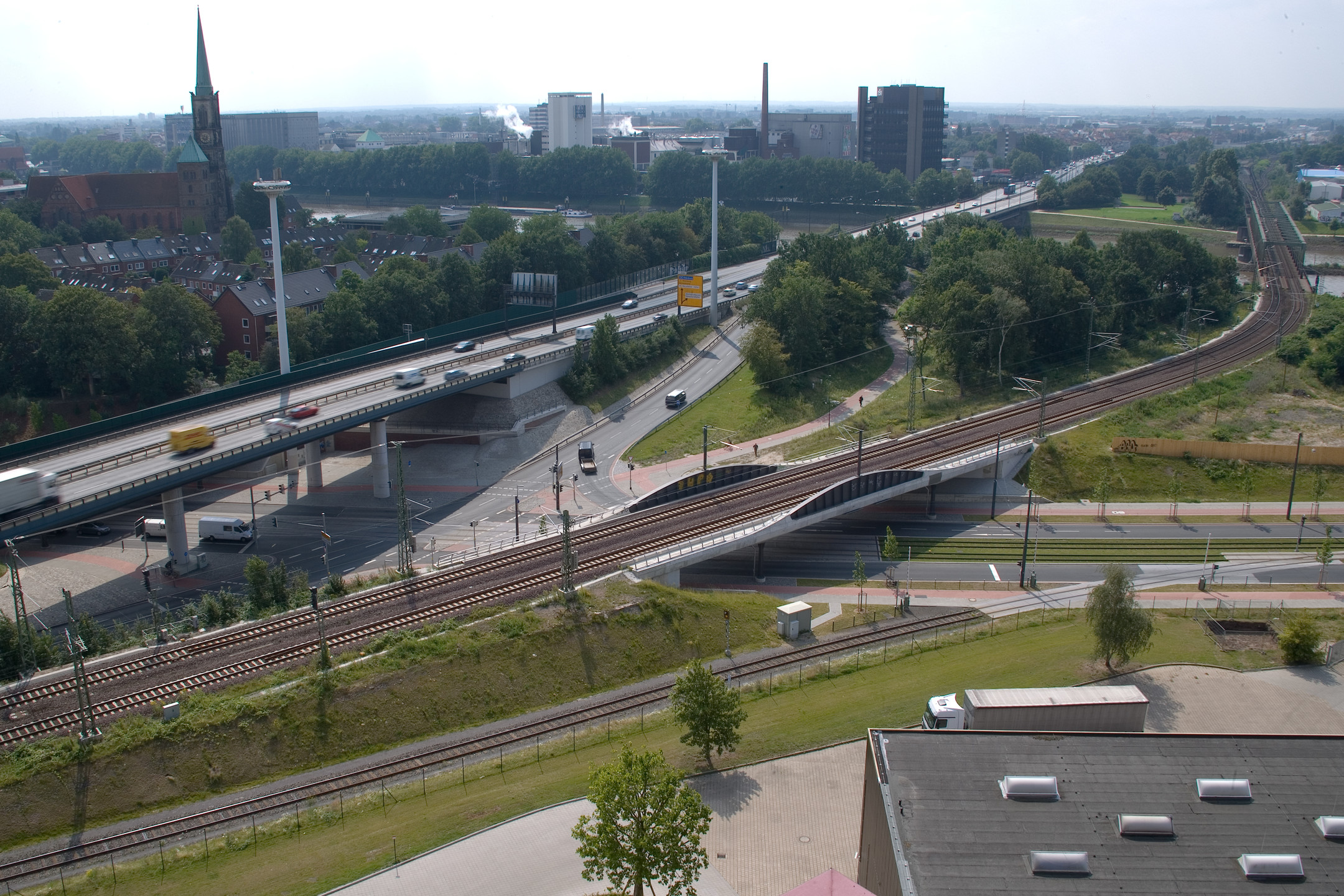The basis for the initial design was the creation of two bridges that were to be recognizable as a unit, yet each with its own characteristics. The “light” road bridge with its dissolved arch structure and the integrated glazed noise protection wall stands across from the “stronger” rail bridge with its closed arch planes. Both bridges were designed as three-field bridges with abutments set back into the embankment. The abutments sit parallel to the street. The resulting visual opening appears more generous along the axis of the connecting street, eliminating the tunnel-like effect typical to inner city overpass structures. The slender steel tube inner columns of both bridges as well as the abutments are connected to the superstructure without a joint or bearing (integral). The bridge could be mostly constructed without interrupting the train schedule.





